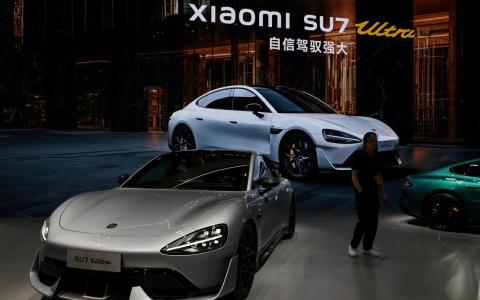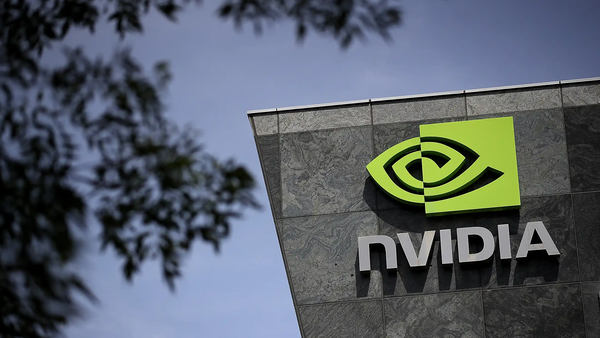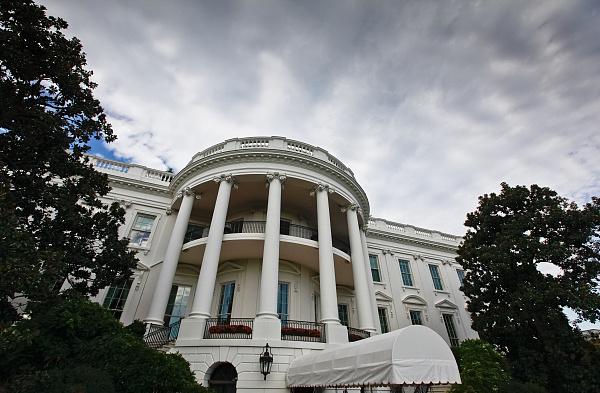
I had dinner with a friend who came to Singapore from Shanghai. On the weekend night at the Orchard Road shopping mall, there were long queues outside several restaurants. I had to wait for half an hour before I could be seated.
My friend lamented that Shanghai’s catering industry had not seen such a scene for a long time. Even some Michelin restaurants that used to require advance reservations can now be eaten at any time.
The 2025 edition of the Shanghai Michelin Guide was announced this week, with a total of 145 restaurants on the list. As one of the highest benchmarks in the catering industry, after the release of the Michelin Guide in previous years, the restaurants on the list either quickly increased their prices or were hard to find. But the second day after Ultraviolet (UV), a Western restaurant in Shanghai, won the Michelin three-star rating, it announced that it might close next year.
As one of the only two Michelin three-star restaurants in Shanghai, UV has been known for its sky-high menu and extremely difficult reservations since it opened in 2012. The restaurant’s basic set meal costs 4,800 yuan (RMB, the same below, 891 Singapore dollars) per person, and the special set meal can be as high as 10,000 yuan. In addition, only 10 guests are received every day, so diners have to wait on the official website for several months in advance to grab a spot.
After the news that UV will close spread on social media, some diners posted that they have frequently received promotional information from the restaurant this year, and there are more and more places to get a bargain. All signs indicate that business is not as good as before.
This is not the first high-end catering brand to withdraw from the market this year, and this situation is not only happening in Shanghai. Opera Bombana, which has been listed in the Beijing Michelin Guide for three consecutive years, closed down in April this year, and Beijing Michelin one-star vegetarian restaurant Shanhe Wanduo closed in September. L’Atelier 18, a French restaurant headed by a Michelin three-star chef, just appeared on the Bund in Shanghai in January this year, but closed down in August and was exposed by employees for arrears of wages and provident funds.
According to the big data of the catering industry platform Hongcan, as of July this year, the number of restaurants in Shanghai with an average per capita consumption of more than 500 yuan decreased by more than 1,400 compared with May last year, a drop of more than 50%.
In order to survive in the increasingly fierce competition, many high-end restaurants have begun to lower their profile. The Michelin two-star restaurant 102 Bistro, with an average per capita consumption of 1,800 yuan, launched a 498 yuan set meal, the Xinrongji with an average per capita consumption of 1,000 yuan launched a 398 yuan set meal, and the Michelin one-star restaurant Chenglongxing Crab King Mansion’s set meal was as low as 189 yuan.
In the overall economic weakness, enterprises strictly control costs, and the downgrade of private consumption, high-end restaurants that focus on added value such as service and environment are not only directly affected by the reduction of business banquets, but also not as popular as in the past among the middle class.
In contrast to the predicament of high-end restaurants, affordable restaurants are thriving. Saizeriya, a Japanese chain restaurant brand with a price of no more than 20 yuan per dish, is now the most profitable Western restaurant in China. In fiscal 2024, the group had a total of 415 stores in Shanghai, Guangzhou and Beijing branches, 42 more than a year ago, with total revenue in the three places increasing by 27% year-on-year and operating profit increasing by 33%.
Is Saizeriya delicious? Compared with the super high cost-effectiveness of “eating Western food for 20 yuan”, the taste does not seem to be that important. Even the Western restaurant chain giant Pizza Hut has begun to follow Saizeriya and launched a sub-brand “Pizza Hut WOW” that also focuses on low-priced pre-prepared dishes.
Of course, whether to eat Michelin or Saizeriya is a personal choice, and there is no difference between high and low. But high-end catering is the vane of the catering industry, and the catering industry is the barometer of the consumer market. In the market that can support high-end catering, mass catering is often more prosperous, and the willingness and ability to consume are stronger, and vice versa.
After China lifted epidemic prevention and control at the end of 2022, the catering industry ushered in a blowout growth last year, and the recovery speed was significantly faster than commodity retail. However, with the tide of consumption downgrade, the growth of catering revenue has slowed rapidly this year, and first-tier cities such as Beijing and Shanghai have even declined.
In October this year, China’s total retail sales of consumer goods increased by 4.8% year-on-year, exceeding expectations, and rebounded for the second consecutive month, but partly because this year’s “Double 11” shopping festival started promotions 10 days earlier than last year.
If divided by consumption type, the year-on-year growth rate of retail sales in October rose by 1.7 percentage points to 5%. The year-on-year growth rate of catering revenue in the same month rebounded by 0.1 percentage points to 3.2%, which was lower than the growth rate of retail sales for the second consecutive month, and the gap further widened.
Han Wenxiu, deputy director of the Office of the Central Committee of the Communist Party of China’s Financial and Economic Commission, wrote this week that we should give full play to the advantages of the deep and broad economy of a big country, adhere to the strategic basis of expanding domestic demand, and release huge and lasting economic development momentum. He further proposed that we should enhance the fundamental role of consumption in economic growth and accelerate the improvement of the policy environment of “wanting to consume, daring to consume, and being able to consume”.
However, the Standing Committee of the National People’s Congress of China held at the beginning of this month launched a large-scale 10 trillion yuan debt reduction plan, but it focused on reducing the debt risk of local governments and still did not allocate real money to promote consumption as expected by the market.
Of course, only after the debt of local governments is reduced can they have the spare capacity to promote local investment and consumption. But this transmission process takes some time and it is difficult to see immediate results; and the US President-elect Trump, who has threatened to impose a 60% tariff on Chinese goods, will take office in January next year. Domestic worries have not yet been alleviated, and external troubles are imminent. Is there enough time for China to boost domestic demand and cope with shocks?
The next policy window that the market is paying attention to is the Central Economic Work Conference held in December, but this meeting, which aims to set the tone for next year’s economic goals and policies, generally does not introduce specific measures. UBS’s macro team predicts that a new batch of measures will not be announced until the National People’s Congress meeting in March next year, and will be further increased after the details of the US tariff increase are announced.
I hope that by then, the Chinese catering market will not only have Saizeriya, but also Michelin.










